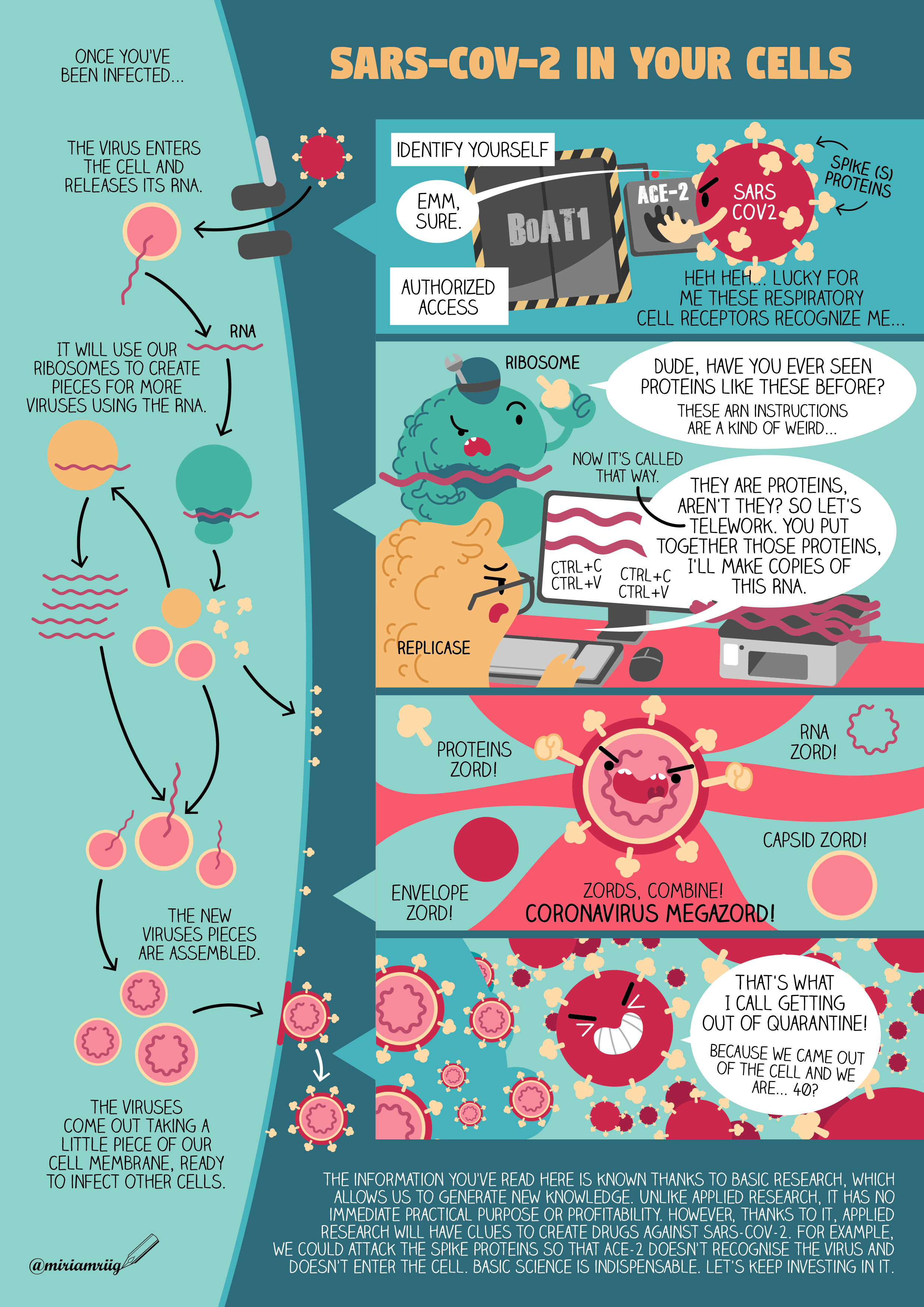
We are currently in a difficult situation due to the COVID-19 pandemic caused by the new coronavirus. This has reminded us how important public health is, and also how important scientific research is and all members of the health system are.
As far as we know, this virus can cause symptoms such as fever, dry cough or shortness of breath, or simply not having any symptoms for many people. At least in Spain, the current problem is that the health system has collapsed and the most serious cases, which require hospital care and admission, may find that there are not enough beds, material resources or health professionals to attend to them. That is why preventative measures and confinement are so important, to try to ensure that the most serious cases can be treated.
So, the first thing I came up with when I thought about drawing a comic on this issue was to talk about prevention methods. It is vitally important for the population to know how to avoid coronavirus infections. However, there is now a lot of visual content on this topic, especially infographics, so I decided to look for a different theme in which I could spread science and also transmit an important message. Thus, the comic ended up dealing with the mechanism by which the virus infects our cells and uses them to replicate itself.
In this comic, just like the ones I usually do, I try to use humor and visual metaphors to explain something that may seem difficult at first.
On the one hand, visual metaphors allow us to compare these concepts with words and situations that the audience can understand or imagine because they are familiar to them. An example of this is in the first vignette. SARS-CoV-2 can enter cells when its Spike proteins interact with other proteins on our cell membrane that act as receptors, called ACE-2 (Angiotensin Converting Enzyme 2) receptors. This activates the BOAT-1 protein (Sodium-Dependent Neutral Amino Acid Transporter) and allows the virus to enter. This can easily be compared to a door (BOAT-1) with a recognition system (ACE-2) that only allows passage if it recognizes you as authorized personnel (thanks to the Spike proteins).
On the other hand, humor can make people laugh and associate science with something positive that is easily remembered. For example in the second vignette, replicase (a protein that the virus uses to create copies of its genetic material) is acting like an office apprentice whose job is just to press CTRL + C, CTRL + V on the keyboard: copy and paste. Here we can find a metaphor but also a little joke about quarantine and telecommuting. With this, the reader identifies with the character. The creates a comic that relaxes tensions in these complicated times.
But this is not the only information I wanted to transmit. One of the challenges I face when I create a popular science comic is not only explaining what a process or scientific concept consists of, but also raising awareness in society about how it affects us, how it can help us and why we should care. That is why I included a final message about how basic science, which generates this type of knowledge but does not produce immediate profitability, is important for applied science to find new vaccines or treatments against the virus.
Find more scientific comics at Biomiics.

Download for free the ebook “4 scientific communication actions in which to implement comics to increase their impact” (in Spanish).




